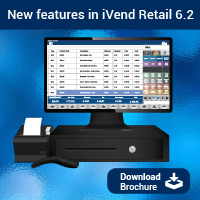
Every retail organization, regardless of its size, has a merchandise hierarchy for all the goods. A Merchandise Hierarchy is a reporting structure under which sales and inventories of products are tracked and managed.
The function of the merchandise hierarchy is to categorize products and is NOT intended to describe product or classify organizational,  production or design elements. Merchandise hierarchy can have multiple levels with the highest level providing an overall enterprise view and then narrowing down to families or classes of products, with the total number of levels being determined based on specific business requirements and is the same throughout the enterprise. It provides a common language and consistent codes at each hierarchical level and ensures that merchandise systemically resides in one place and is grouped based on similar form and format and common purpose and use.
production or design elements. Merchandise hierarchy can have multiple levels with the highest level providing an overall enterprise view and then narrowing down to families or classes of products, with the total number of levels being determined based on specific business requirements and is the same throughout the enterprise. It provides a common language and consistent codes at each hierarchical level and ensures that merchandise systemically resides in one place and is grouped based on similar form and format and common purpose and use.
With Merchandise Hierarchy in iVend Retail 6.2, users will be able to:
- Define multiple Merchandise Hierarchies in the system
- Attach more than one Merchandise Hierarchy to individual products.
- Top down reporting at all Merchandise Hierarchy levels
Hierarchical classification of products allows companies to customize their data analysis and evaluation, and to address specific needs of individual businesses or the overall enterprise.
A retail organization with well – structured merchandise classification has a fuller view of its products across multiple levels and is able to drill down and analyze data in a variety of ways suitable to their specific business requirements.
A standardized merchandise classification allows similar items across different businesses to be grouped logically. This allows a retailer to view, evaluate and report on data at different aggregate levels and with higher accuracy not only within an individual business, but also across multiple business lines at an overall enterprise level.
By incorporating merchandize hierarchy a retailer benefits through better performance visibility, understanding of consumer demand, and more effective merchandise and sales planning.
The benefits continue down the supply chain and are reflected in better integration with supply chain partners, and improved coordination between retail planning and production, which in turn leads to a reduction in production costs and inventory requirements.
Standardization of the merchandize structure and allocating data ensures data integrity, allowing data governance to be addressed throughout the retail chain at an enterprise level.
Not limited to this, it supports continuous business growth and accommodates moving into other product lines and other industries as the business expands. Through development of common definitions, terminology, nomenclature and structures, an enterprise-wide standardization approach to merchandise classification becomes a key element in driving successful planning, analytical and execution capabilities at a retailer.





